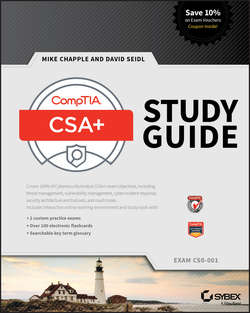Читать книгу CompTIA CSA+ Study Guide - Mike Chapple - Страница 19
На сайте Литреса книга снята с продажи.
Chapter 1
Defending Against Cybersecurity Threats
Summary
ОглавлениеCybersecurity professionals are responsible for ensuring the confidentiality, integrity, and availability of information and systems maintained by their organizations. Confidentiality ensures that unauthorized individuals are not able to gain access to sensitive information. Integrity ensures that there are no unauthorized modifications to information or systems, either intentionally or unintentionally. Availability ensures that information and systems are ready to meet the needs of legitimate users at the time those users request them. Together, these three goals are known as the CIA Triad.
As cybersecurity analysts seek to protect their organizations, they must evaluate risks to the CIA Triad. This includes identifying vulnerabilities, recognizing corresponding threats, and determining the level of risk that results from vulnerability and threat combinations. Analysts must then evaluate each risk and identify appropriate risk management strategies to mitigate or otherwise address the risk.
Cybersecurity analysts mitigate risks using security controls designed to reduce the likelihood or impact of a risk. Network security controls include network access control (NAC) systems, firewalls, and network segmentation. Secure endpoint controls include hardened system configurations, patch management, Group Policies, and endpoint security software.
Penetration tests and reverse engineering provide analysts with the reassurance that the controls they’ve implemented to mitigate risks are functioning properly. By following a careful risk analysis and control process, analysts significantly enhance the confidentiality, integrity, and availability of information and systems under their control.
